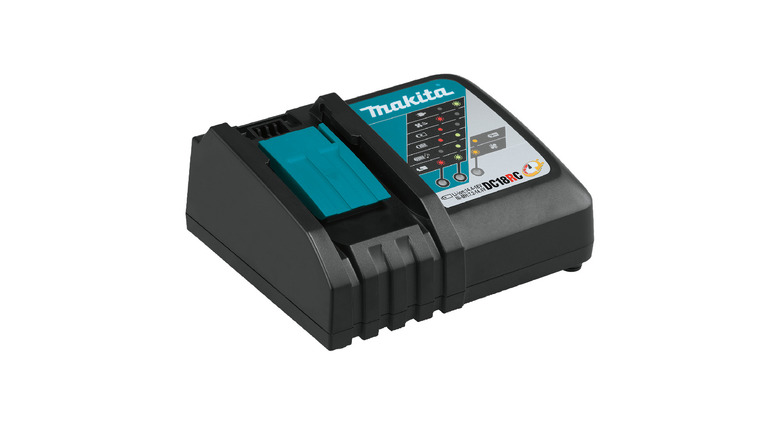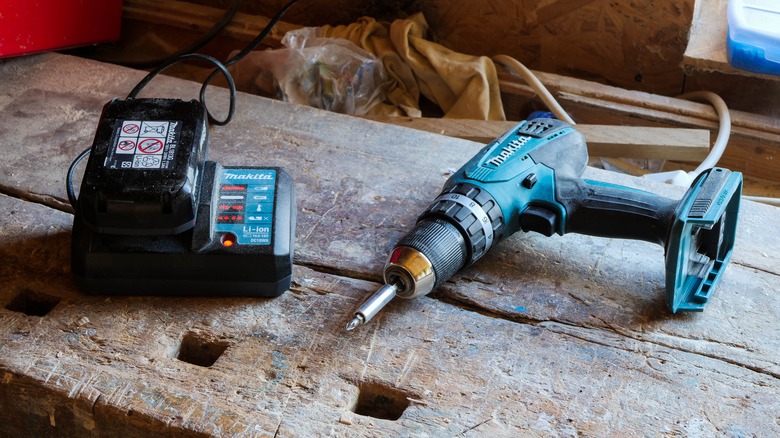Why Your Makita Battery Charger Is Flashing Red (And How To Fix It)
With over a hundred years of history, Makita has long been renowned as a reliable tool manufacturer globally. In fact, it has even graced our list of best power tool brands here at SlashGear (and for good reason). Despite its long legacy and expansive product lines, it remains committed to continuously innovating its products with patented technology you won't be able to find with other brands, such as its battery systems.
Currently, Makita has three battery systems: XGT, LXT, and CXT, which works for different power tool niches in its ecosystem. Depending on how powerful or how precise the tool, the right battery system can be your companion for finishing your next project, whether you're a professional or home DIYer. But, what does it mean when the battery charger's light starts flashing red?
According to Makita's Service FAQ, the flashing red light indicator means that there is a delay with its charging. To get your charger back to work and make the red light stop blinking, it recommends bringing the battery's temperature back to normal levels. You can do this by allowing the battery to cool down or warm up back to a safe level to charge.
What do the other Makita battery charger indicator lights mean?
Aside from the red blinking light, there are other light indicators that you should be wary of when you notice it on your Makita charger. For example, a flashing green/red light means that the battery is defective and flashing yellow means it's not cooling as it should. On the other hand, a solid yellow means it's still conditioning.
However, there are some light indicators that mean good news. For example, if you see a light that is flashing green, this means that it's ready to charge. On the other hand, some solid lights mean that charging is ongoing, such as red (battery is below 80% charge) and red + green (battery is above 80% charge). Lastly, a solid green light indicates a full charge. While an unmoving, solid lights like red, red/green, and green indicates that it is working normally, so there is no reason for concern, and you can continue on with your work.
Regardless of where your Makita tools are made, the reality is that they're only going to last if you are going to take care of them. Aside from watching out for these little indicators, you should also consider ways to regularly monitor their condition, whether it is through regular cleaning or a standard maintenance schedule. If you haven't already, check out our tips for organizing your garage, so you can have more control over your tools and have access to them when you need them.

